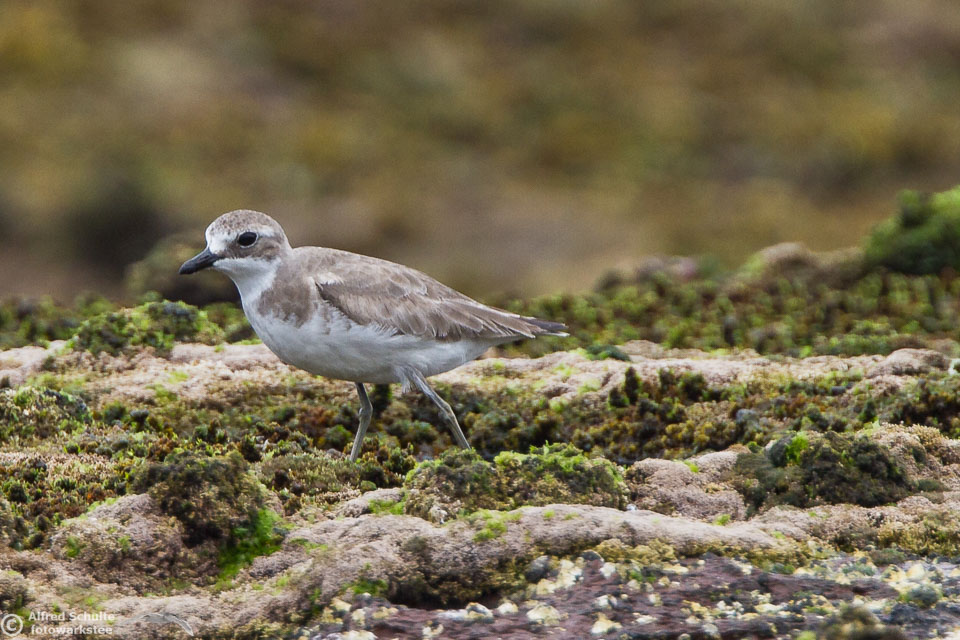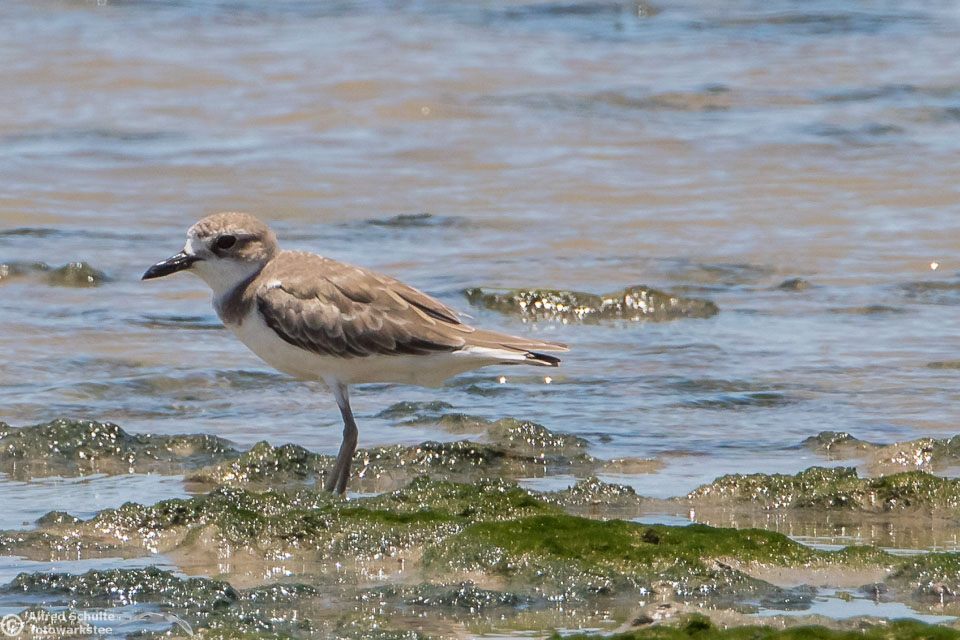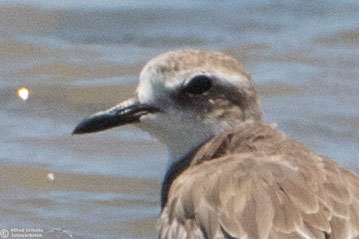Comparing Lesser and Greater Sand plover
Some waders, especially in non-breeding plumage, can be difficult to distinguish in the field, e.g. the Greater and Lesser Sand plover.
This is an example for a difficult bird. The photo was taken at Lake Wollumboola in January 2015. Give it a try and see if you can identify whether the bird below is a Greater or Lesser Sand plover! It was difficult for me. More photos of this particular bird can be found here: https://fotowarkstee.de/galleries/1_birds/shorebirds-and-gulls-charadriiformes/greater-and-lesser-sandplover/

The new version of the TTG Backlight web tools, which I use for the production of my own website, allow me to compare two photos in a very elegant way by swiping a slider to transition from one shot to another. I have used this new function to show photos from a Lesser (left photo) and Greater Sand Plover (right photo). I have recently (Jan 15) replaced the shot of the Greater Sand Plover by a photo taken at my trip to Broome in October 2014. A good source for more information how to separate specifically Greater and Lesser Sand plovers is this paper:
https://britishbirds.co.uk/wp-content/uploads/article_files/V93/V93_N04/V93_N04_P162_189_A001.pdf
In this document, the authors state: "In relation to total bill length, the nail (the ‘hump’ at the tip) is longer on Greater and shorter on Lesser". Now, for the bird seen at Lake Wollumboola, the hump is almost exactly 50% of the total bill length. A response which we got from submitting the banding info, was that this bird had been flagged in Kamchatka - and under normal conditions there are no Greater Sand plovers there, which makes the Wollumboola bird most probably a Lesser Sand plover.
Have fun and if you like, feel free to provide comments via the Contact page!


Lesser - / Greater Sandplover


Lesser - / Greater Sandplover
